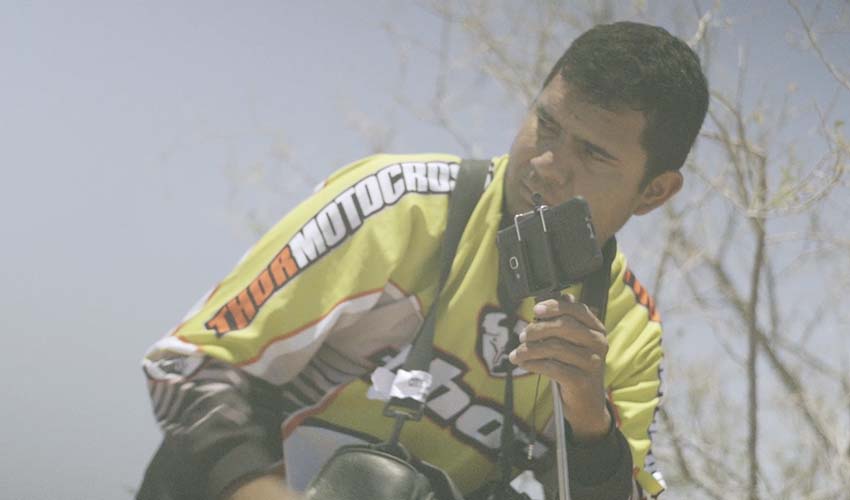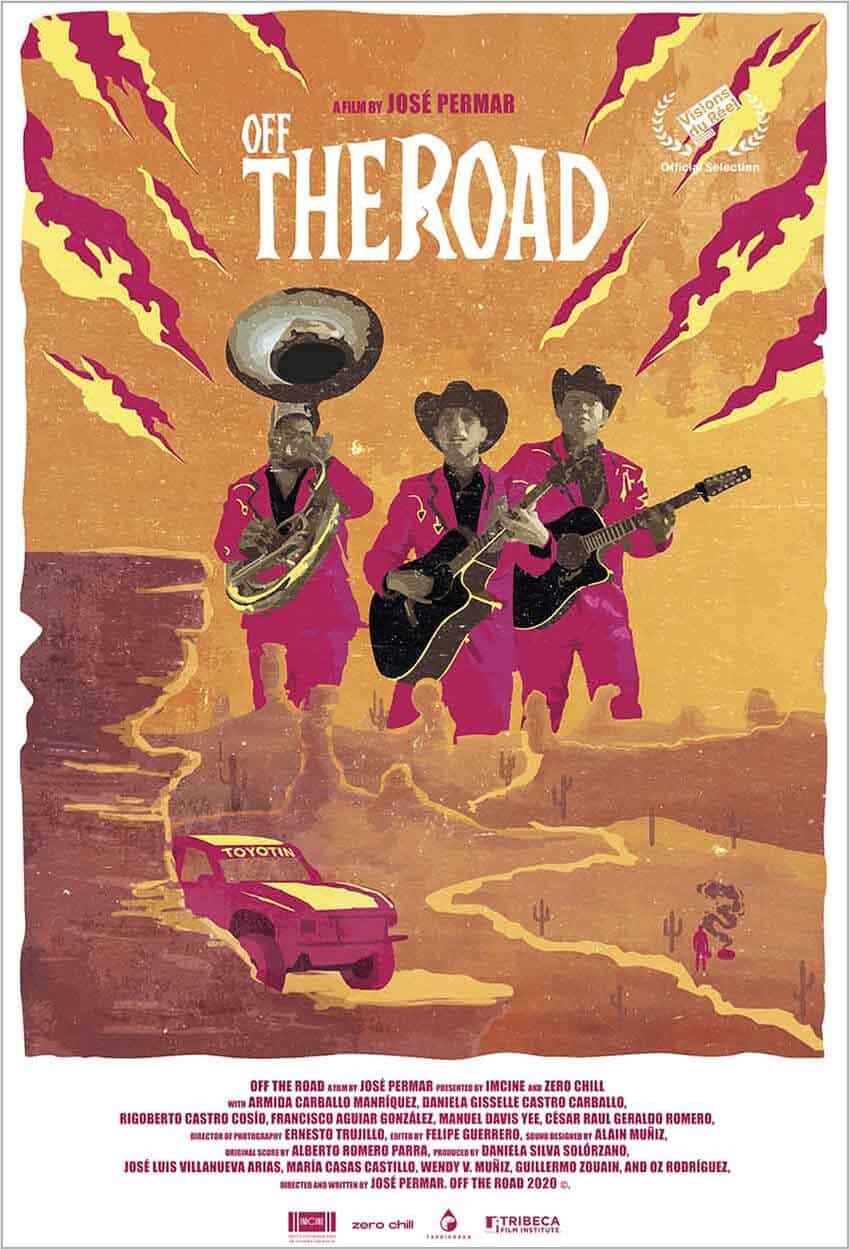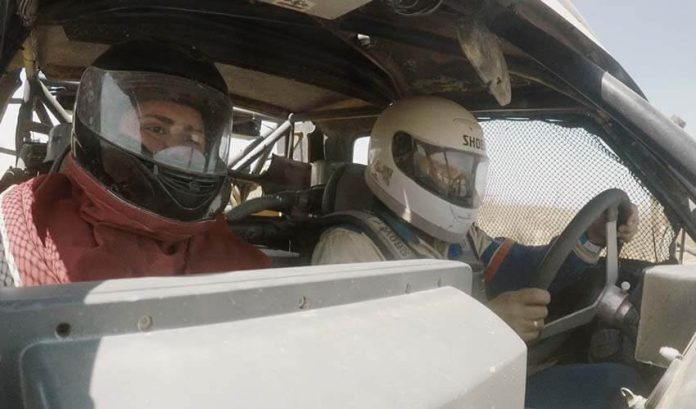Behind the wheel of an imposing Toyotin pickup truck, the father-daughter racing team of Rigo and Dani prepares for the Coyote 300 off-road race in Baja California Sur. The Toyotin is the defending champion in its division.
This year, pilot Rigoberto “Rigo” Castro Cosío and copilot Daniela Gisselle “Dani” Castro Carballo are ready to tackle the desert terrain yet again while chasing a bigger goal: entry into the Baja 1000, or “Baja Mil.”
A nonstop 30-hour drive from the United States border to the tip of the peninsula, the annual event is reportedly the biggest off-road race in the world.
The new documentary film Off the Road or Fuera del Camino, directed by La Paz, Baja California Sur, native José Permar, shines a spotlight — or, rather, a headlight — on the remote, sparsely populated region around the racecourse that once a year sees an influx of visitors for the Baja 1000. In a creative documentary approach, the film chronicles the buildup to a race as well as the event itself.
Although none of the cast are participants in the race, they are not quite spectators either. Rather, they seek to be somewhere in between.

There’s Rigo, looking for a repeat win in the Coyote 300, with an eye toward the Baja 1000. Meanwhile, former pilot Davis dreams of the days when the now-vanished cotton trade made Baja California Sur a region of thriving communities.
Journalist Paco focuses on an upcoming race and how to make it safer for all involved. Mindful of a friend who died in a car accident, Paco urges spectators not to get too close to the cars or vandalize the terrain.
“More or less, all the characters are people who want to be part of the race and can’t,” Permar explained in a Zoom interview from Belgium, where he is pursuing a documentary master’s program. “It’s about being part of something that does not take you into account and all the messages, I think, that can come from that — the desire to be taken into account.”
Earlier this year, Off the Road won an award for best cinematography at the Atlanta Film Festival. Past Mexican screenings include the Los Cabos International Film Festival. Audiences are responding to the film, with many considering it a western.
“I did not realize it was a western,” Permar said. “I’m used to seeing the landscapes. I grew up in the landscapes. I would watch and hear the music. I did not see [the film] as a Western. It’s super-cool that someone from [outside] connected it with some of the [western] films.”
Now he sees the parallels, too — including “the idea that the race is like a big enemy appearing at a small village.”

Permar is familiar with both the big event and the small villages. He recalls car trips with his father, a baker, who would sell bread to the villages of several hundred people each, all hours away from each other.
“I knew all these villages and how isolated they were,” Permar said. “I think it’s the most isolated part of Mexico.”
While he was growing up, his uncles introduced him to the Baja 1000. Permar describes himself as not exactly a fan of the actual race but fascinated by its atmosphere — the barbecues, the heat and the sense of anticipation among the crowd.
“They were just waiting and waiting and waiting for the race to come,” he recalled. “The cars would pass by in the dust, then my uncles would say, ‘Yeah, that’s it. Let’s go.’ It was a memory from my childhood. It was so funny, waiting for something to happen. It happened just like that.”
It’s been happening since the 1960s — part of an even earlier tradition of off-road racing in the region that draws crowds of visitors, including many Americans.
“There are a lot of legends about it,” Permar said about the Baja 1000. One legend, related in the film, tells of a priest blessing the participants from an airplane.

An even older Baja tradition is that of the corridos, the songs once used to spread news from town to town during the Mexican Revolution, according to Permar. The director found a contemporary group, Los Inalcanzables de la Baja, to perform corridos for the film that serve as a kind of narration.
In one particularly memorable performance, they sing a corrido called “La Tormenta” — a recreation of Tropical Storm Lidia, which struck Mexico in 2017. “The idea was to make the guys feel inside the hurricane, the eye of the hurricane,” Permar said.
In Off the Road, clouds swirl around the band, which consists of two guitarists and a tuba player, all wearing cowboy hats and blue leather jackets. As they perform, encircled by cacti, the camera rotates around them to further evoke the storm.
“It was a lot of fun to do this scene,” Permar said.
This is Permar’s first feature film. He previously made two well received short films, Bestia and Aurelia y Pedro, before tackling a longer project in which he revisited his home state.
When beginning the Off the Road, Permar asked around for whom might be a good interview subject. He wasn’t looking to make a film about top race competitors, but a different kind of story.

“The idea was always to make the film about the race and people waiting for the race to happen,” he said. “I discovered people working in a mechanic’s shop, for example. Sometimes I would get their phone number. Or one of the pilots would call them.”
One such contact was Rigo, who works as a mechanic in La Paz. He ended up not only speaking with Permar but giving him a ride in the Toyotin.
“He did not allow me to drive,” Permar recalled. “He likes to drive it. Even for Daniela, his daughter, it was difficult for him to let her drive.”
Rigo proved a tough early interview. Doubting his chances to win, Permar asked why he wanted to enter the Baja 1000, noting that the entry fee cost more than the Toyotin itself. Rigo countered by asking Permar why the director was spending so much of his own money to come to his workshop and interview him.
“I said, ‘You’re right. It’s passion. I completely understand,’” Permar recalled. “Whenever you feel [you have to] follow your passion, you do it … It defines who you are. [It] … motivated me to make the film beyond funny anecdotes.”
This extends to the coverage of race day itself, in which the director increased the size of the crew from a handful to 30 people working across the peninsula. The film shows not only the excitement of the Baja 1000 but also a more complex picture — including a race-day tragedy.
Citing the issue of accidents in the race in general, he said, “It’s a mix of something — too many people, drinks, cars, money, emotions.”
He also noted that there are people in Baja who “don’t like the race that much, there’s a lot of pollution — it’s kind of destroying the deserts, for example.”
Yet, he reflected, “People really do sometimes want to be part of the winning team in some way. When a car is stuck, they’ll run after it to help them, to be part of something.”
Rich Tenorio is a frequent contributor to Mexico News Daily.
